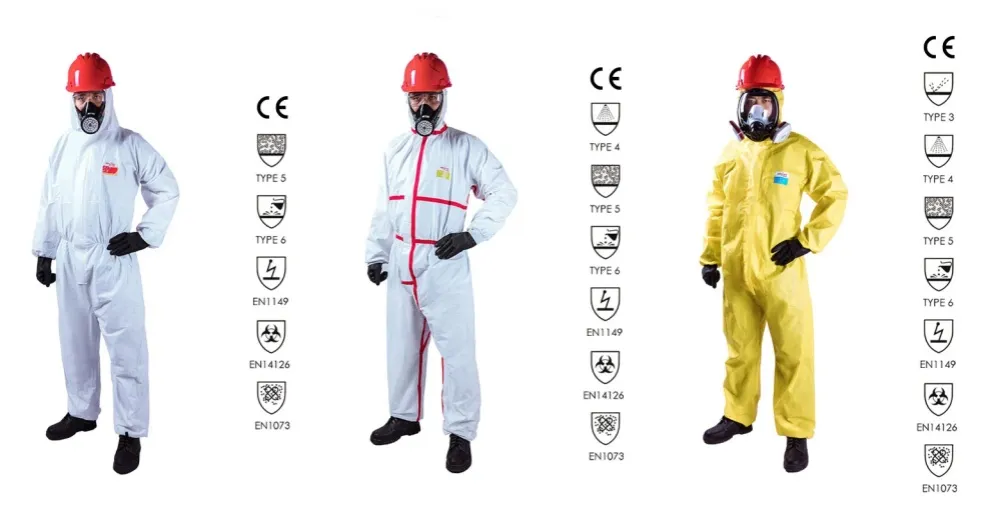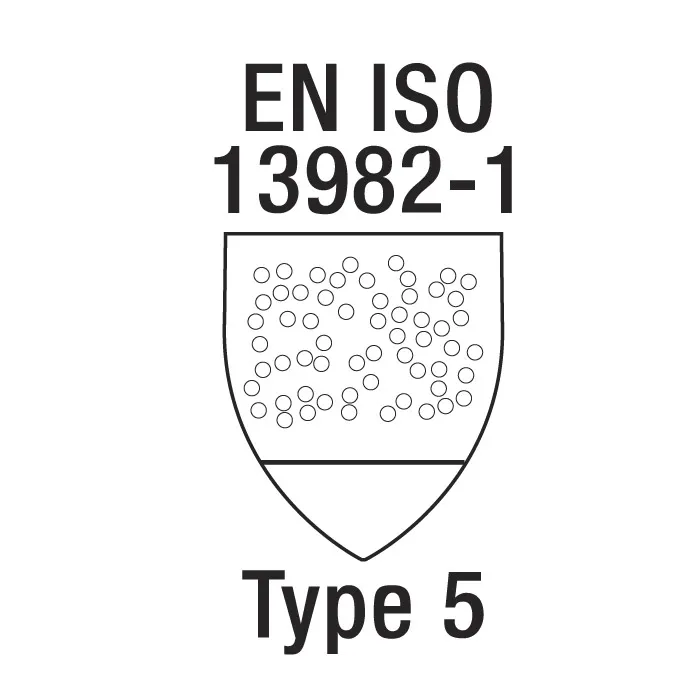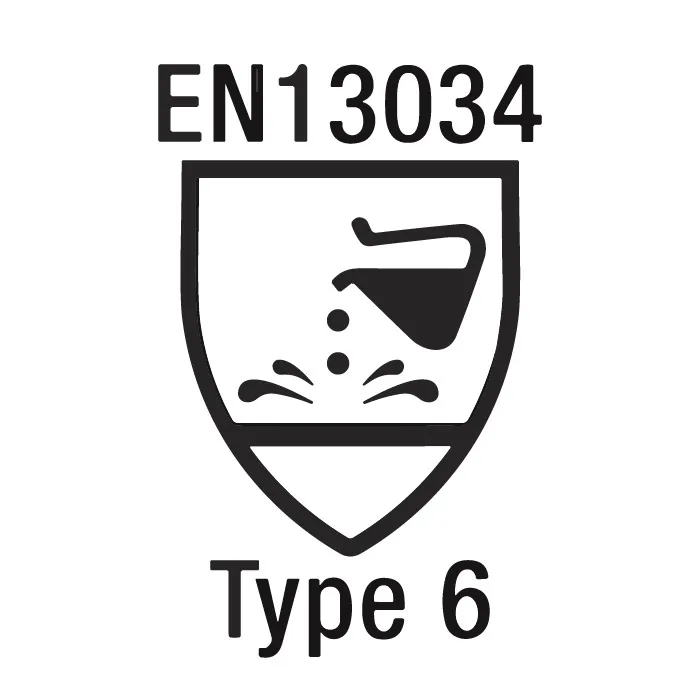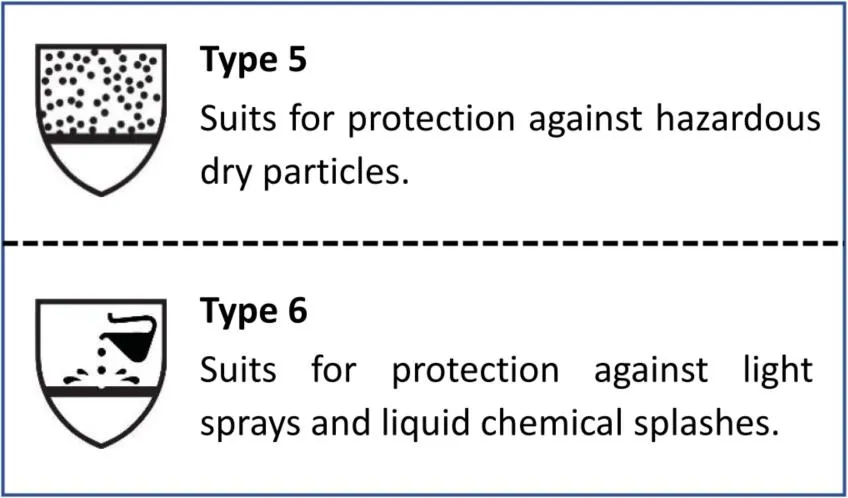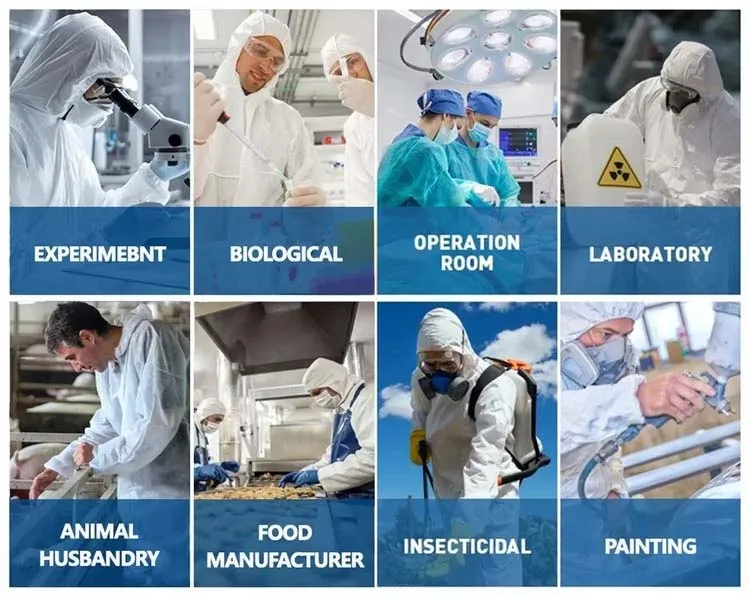Not all protective clothing is created equal. If your tasks involve exposure to dust or chemicals, you need gear that goes beyond basic coverage. Many industries now rely on Type 5/6 Disposable Coveralls to safeguard workers while ensuring comfort and ease of movement throughout the day.
What Is Type 5/6 Disposable Coverall?
From my experience, Type 5/6 disposable coveralls often use light, non-woven, human-made fibers. Examples of these fibers are polyethylene (PE) and polypropylene (PP). Heat bonds these fibers together. This process creates a strong fabric. I find this fabric acts as a barrier and feels comfortable to wear.
Types of Protective Materials
Based on my experience, here are some materials I often see:
- SMS Fabric: I note this fabric has three layers. The first layer is spunbond, which gives it strength. The middle layer is meltblown, and its job is to filter fine particles. Another spunbond layer on the other side adds durability. I’ve found SMS fabric can filter up to 99% of common industrial dusts. I often see it used in construction and pharmaceutical places, and I think it’s a good choice for those areas.
- Microporous Laminated Fabric: I notice this fabric has a PE-based breathable film on a non-woven base. This structure is impressive because it blocks particles as small as 0.01–0.1 microns. It also repels light liquid sprays. For these reasons, I think it’s a strong option if you’re working in chemical plants or with hazardous materials.
- PE Laminate: In my opinion, PE Laminate is a strong, light barrier. I find it works well for tough jobs. It gives good protection from both liquids and particles, which I recommend for challenging conditions.
Construction Details for Safety
From my experience with these type 5/6 disposable coveralls:
- Manufacturers usually stitch, weld, or tape the seams. I believe this is a key step to block out dust and liquids effectively.
- I’ve noticed many designs include an antistatic treatment. This is important because it helps lower the chance of sparks. This is especially crucial in settings where things might easily catch fire.
- Even though you dispose of them after use, I find these type 5/6 disposable coveralls are surprisingly strong. They can handle tough jobs. For instance, I’ve seen them used for asbestos removal, paint spraying, and when people work with toxic substances. I feel this durability is a significant benefit.
EN ISO 13982-1 Certification and Labeling Requirements for Type 5 Coveralls
I believe Type 5 disposable coveralls need to follow the EN ISO 13982-1 standard. From my understanding, this standard sets out the basic protection levels for clothing meant to shield you from tiny solid particles in the air. I’ve seen that each coverall should protect your whole body. This means it covers your torso, arms, and legs. You might also find optional items like face masks, visors, and protection for your feet.
Mandatory Performance and Labeling
- In my experience, the garment has to pass tests that check for leaks from the outside. These tests use a sodium chloride spray. This is important because it proves the coverall can effectively block dangerous dusts, such as asbestos and silica.
- I suggest you check that each coverall label clearly shows:
- The manufacturer’s name and the model number (for instance, “ABC Protective Clothing Ltd.”, “Model X500”)
- The standard it meets: “EN ISO 13982-1:2004”
- The year it was made and when it expires (like “2025/Expires 2030”)
- The CE mark, its size (L, XL, etc.), and easy-to-understand symbols (Type 5/6, and a symbol meaning “read instructions”)
- I also recommend looking for care instructions and notes on any special protective qualities, like if it offers safety from static electricity or biological hazards.
Application Scenarios
I know that Type 5 suits are considered category III Personal Protective Equipment (PPE) when you use them for chemical protection. People typically use these suits for tasks like asbestos removal. I’ve also seen them used when handling powders in the pharmaceutical industry and for managing other kinds of hazardous dusts. It’s good to know that experts reviewed and confirmed this standard in 2024, so it is still current and valid.
EN 13034 Type 6 Protection Standard for Disposable Coveralls
Based on my experience, EN 13034 Type 6 disposable coveralls are for workplaces with a low risk of liquid chemical exposure. These coveralls provide limited protection. They shield workers from light sprays, small splashes, or airborne mists of liquid chemicals. I find them to be a good choice. They work well in laboratories and pharmaceutical sites. They are also suitable for maintenance jobs and cleaning tasks that use diluted chemicals.
Key Criteria and Usage Scenarios
- Low-Risk, Limited Protection: I suggest you remember these are for situations where you don’t need full chemical barriers. Heavy exposure is not expected.
- Types of Garments: You’ll often see full-body suits. I’ve noticed other options are also available. These include jackets, trousers, aprons, or sleeves (marked with PB labeling).
- Seam and Material Performance: I recommend checking that seams block liquids where the garment joins. The materials also need to pass tough tests. These tests check for liquid penetration, how well they repel liquids, and their durability.
- Prompt Removal: If they get contaminated, you must remove the coveralls fast. This avoids long contact with chemicals. I believe this step is very important.
- Practical Applications: I often see these used for light chemical handling. They are also common in pharma work and maintenance. In these jobs, you can manage incidents without delay.
For the best protection, I strongly recommend choosing certified garments. If they become contaminated, change them without delay.
Key Differences Between Type 5 and Type 6 Disposable Coveralls
Comparison of Protection Levels
- Type 5 Coveralls are for dry places. I find they protect you from dangerous dust and bits in the air. In my opinion, this makes them a good choice for work like removing asbestos or processing wood. These coveralls use multilayer SMS fabric. I believe the meltblown middle layer is very important here. It does a good job filtering tiny dust particles. Some brands use SMMS or SMMSSMS fabric types to give even better particle protection.
- Type 6 Coveralls are for dangers involving liquids. In my experience, they shield you from light mists and splashes of chemicals. They also meet the EN 13034:2005 + A1:2009 standards, which I think is crucial. I’ve seen that their design often includes PP nonwoven material with a laminated film. This film is helpful, in my view, because it stops liquids from soaking through. This is great for lab work or cleaning jobs.
Fabric Breathability and Application
- Breathability is important, I feel. Fabrics that breathe more (like SMS material) reduce what I call the ‘belows effect.’ This effect can pull dust in through seams or zippers, so limiting it is good. I believe this is a key point. From what I’ve seen, laminated films are great for stopping liquids. However, they can also make you feel warmer because they trap heat.
- Certification Note: Most disposable suits I’ve come across are marked for both Type 5 and Type 6. I suggest you keep in mind that real protection from dust and liquids needs different kinds of fabric technology. So, I recommend you pick a suit based on the exact dangers in your workplace.
How Industries Use Type 5/6 Disposable Coveralls?
From my experience, many industries use Type 5/6 disposable coveralls. I find them versatile, and they offer good protection. These coveralls are a key piece of personal protective equipment (PPE). Workers use them when they might encounter harmful dust, small particles, or light chemical splashes.
Key Industries and Work Settings
Let me show you some examples:
– Manufacturing & Engineering: I see workers use these coveralls for tasks like machining, welding, and painting. They also use them when working with dangerous materials that create dust or splashes.
– Chemical & Pharmaceutical Areas: I believe these coveralls are essential for handling chemicals. They are also important in making medicines. They stop particle exposure and prevent cross-contamination.
– Labs & Cleanrooms: For labs and very controlled areas, I recommend sterile and irradiated coveralls. These help keep products and work processes uncontaminated.
– Other Uses I’ve Seen:
– Handling lead and other dangerous materials.
– Construction and renovation, especially with dust or chemical splash risks.
– Farming and pest control, when using chemicals or pesticides.
– Removing asbestos to protect from fibers.
Meeting Safety Standards
In my view, Type 5/6 disposable coveralls are usually disposable. They meet tough EU Category III safety standards. Manufacturers design them to protect against small liquid splashes. I also find they help stop dangerous materials from spreading between different work zones.
My Take on Type 5/6 Disposable Coveralls’ Features and Benefits
Based on my experience, Type 5/6 disposable coveralls give you strong protection and are quite comfortable. I think they’re a solid choice if your workplace has chemical or particle dangers.
How They Protect from Chemical Dangers?
I’ve seen that Type 5/6 disposable coveralls do a good job of protecting workers from many chemical dangers. They use materials like SMS fabric or microporous laminates. These create a strong barrier against tiny solid bits and light liquid splashes. This protection is really important, in my opinion, when handling corrosive chemicals, toxic substances, or other materials that could be dangerous, which you find in many industries. By wearing these, workers can greatly lower their risk of chemical exposure or related health problems.
Keeping Contamination Out
I find these type 5/6 disposable coveralls are very effective at keeping dangerous particles away from your skin and out of your breathing system. For instance, if you’re a construction worker, they protect you from dust from concrete, insulation, or fiberglass. For those handling paints, adhesives, or solvents, I’d say they offer a welcome reduction in risk from skin irritation or injuries these substances might cause.
Staying Cool and Comfortable
One thing I really like about type 5/6 disposable coveralls is how they let air move through. This means less heat builds up, so you’re less likely to suffer from heat stress. They’re made from light, breathable materials, so you get a good mix of protection and comfort. Many older protective suits can make you too hot. But with these disposable suits, the airflow helps you cool down naturally. This is particularly useful, from my perspective, during long and tiring work shifts.
Key Design Features I Appreciate
- Elasticated Cuffs and Ankles: I like that these stop tiny airborne particles or splashes from getting in.
- Adhesive Zip Flap: This is a smart touch, in my view. It covers the zipper, adding another barrier against contaminants.
- Taped and Bound Seams: I recommend looking for sealed seams like these; they block things from getting through stitch lines for better safety.
- Protective Film Laminate Layer: This layer blocks liquids but lets body heat out. I think this improves both protection and comfort.
Antistatic Properties
I’ve also seen some models that include antistatic finishes. These finishes are designed to let static electricity discharge without danger. In my experience, this is a key feature in areas where you handle flammable chemicals or dusts, as it reduces the chance of sparks or explosions.
Meeting Safety Standards
It’s reassuring to know that Type 6 coveralls undergo external testing for how well they repel liquids like sulfuric acid and sodium hydroxide; this confirms their reliability. Type 5 coveralls are made to defend you against harmful airborne dust, fibers, and dry particles. Both types meet strict standards. This gives employers and workers, including myself when I use them, confidence that they perform well.
Where I’ve Seen These Coveralls Applied
I’ve seen these type 5/6 disposable coveralls used in many industries where people face chemical or particulate hazards. For example:
– Chemical processing plants
– Manufacturing and engineering facilities
– Construction and industrial cleaning sites
– Food processing environments
– Asbestos removal operations
Their ability to be used in different ways means they meet safety needs for various work situations. I suggest them because they offer essential protection wherever hazardous materials are part of the job.
Limitations and Proper Usage Guidelines Of Type 5/6 Disposable Coveralls
For Type 5/6 disposable coveralls, I think it’s crucial to understand their protection limits. You also need to know how to use them correctly. This helps keep you safe and meet regulations.
What Type 5/6 Disposable Coveralls Can and Can’t Do?
- In my experience, Type 5 coveralls protect you from hazardous dry dust and particles. They are specifically for these.
- I find Type 6 coveralls are good for light liquid splashes. They also handle limited chemical spray.
- It’s important to know these type 5/6 disposable coveralls won’t fully protect you. They are not for chemical immersion. They also don’t cover high biological risks or long-lasting chemical contact. I want to be clear on this.
Getting the Right Size and Fit: My Advice
- From my perspective, if your type 5/6 disposable coveralls are too tight or too loose, they won’t work as well. This can even create new dangers.
- I always recommend trying on type 5/6 disposable coveralls before you start working. This makes sure you have a good seal. It also ensures you can move freely.
How Long Do They Last and When to Dispose?
- I believe most type 5/6 disposable coveralls are for single use. You should use them once.
- If you choose a reusable type, I’ve seen them last about 20 to 50 washes. This really depends on your work area, how much they are exposed, and how well you care for them.
How to Choose the Best Type 5/6 Disposable Coverall for Your Workplace?
- If your job involves a lot of dust, I suggest you pick Type 5.
- If you work in wet areas with risks of chemical splashes, I recommend Type 6. It gives you extra protection from liquids.
Where I See These Type 5/6 Disposable Coveralls Used?
- I’ve noticed these are frequently used in several industries. These include pharmaceuticals, construction, and manufacturing. They are also commonly used for asbestos removal because they provide a dependable barrier.
- I always advise inspecting your Type 5/6 disposable coveralls before each use. Make sure the protection level is right for the hazards of your specific job.

